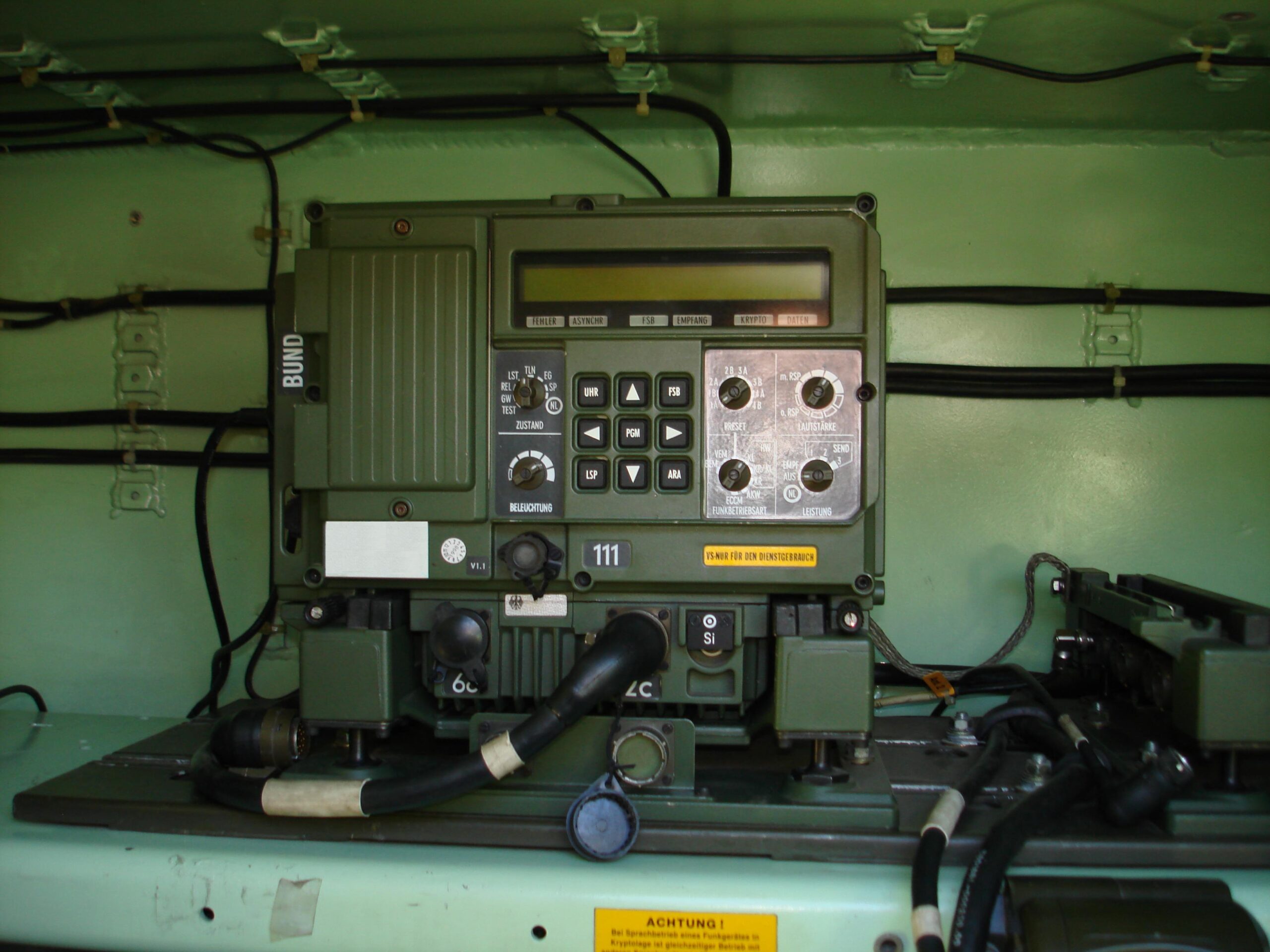In order to communicate securely, land forces in NATO missions allegedly stop their tanks and arrange to talk “tower to tower”.
The German Armed Forces also want to communicate in a tap-proof manner and use encrypted connections for this purpose. This is a problem especially for the Army, which is still not equipped with digital devices across the board. This has dangerous implications for the armed forces’ ability to command in the field.
Today, Lieutenant General Alfons Mais, Chief of Staff of the German Army, once again pointed this out in an interview with the Deutsche Presse-Agentur (DPA). According to Mais, the basic ability to “transmit data and voice in a protected manner” is lacking. Therefore, secure communication is the “most important task in the modernisation of the Bundeswehr”.
Hodgepodge of radios and telephones
The problem has been known for a long time, as described in a 2016 article in DIE ZEIT, according to which the German land forces in Afghanistan had various radios that were incompatible with each other. If a company commander of the paratroopers wants to communicate with his subordinates, he would have to use a short-range radio SEM 52SL. The command post of his battalion, on the other hand, can be reached digitally with a Tetrapol trunked radio. To modernise this aging technology, the Bundestag’s budget committee last year released 254 million euros for the Cellular Networks Deployable (ZNV) project.
According to the ZEIT report, the Army needs the SEM70 knapsack radio for longer distances. In addition, VHF radios of the type SEM80/90 are installed in the armoured command vehicle. In order to communicate with the NATO regional command in Afghanistan and to request air or artillery support, the vehicle also contained an AN/PRC-117F satellite radio.
“As a precaution”, German ground troops are said to have frequently carried two commercially available satellite telephones for the Inmarsat and for the Iridium network at that time. In many cases, however, the soldiers relied on the mobile phone network and Afghan SIM cards, which always worked in the country of deployment.
Slow digitisation
In order to remedy the deficits, which are dangerous for the troops, the Ministry of Defence launched the Mobile Tactical Communications (MoTaKo) programme several years ago, which is divided into six individual projects. The Federal Office of Bundeswehr Equipment, Information Technology and In-Service Support (BAAINBw) in Koblenz is responsible for such procurements. The office has budgeted €5.5 billion for the digitalisation of tactical communications for an initial 25,000 vehicles and 50,000 soldiers.
However, progress on the large-scale broadband project has been slow so far. As an early emergency measure in MoTaKo, the Munich-based electronics company Rohde & Schwarz received an order from the BAAINBw to equip initially 50 Puma infantry fighting vehicles and Boxer armoured transport vehicles (GTK). This Joint, Interconnectable Radio Equipment for Armed Forces (SVFuA) is based on Software Defined Radio (SDR). This enables tap-proof connections up to the classification level Secret.
Rohde & Schwarz has already supplied similar equipment for the NH90 helicopters and the Eurofighter to the German Navy and Air Force. They meet NATO standards and can be used in joint brigades. Together with the defence company Rheinmetall, Rohde & Schwarz founded a joint venture to also equip the Fuchs transport tanks with digital communication electronics.
Bundeswehr relaunches 40-year-old radio equipment
In the meantime, MoTaKo has been merged into the Digitalisation of Land-Based Operations (D-LBO) programme. In the Tactical Edge Networking (TEN) sub-project, the German and Dutch armies have joined forces to develop an interoperable, encrypted communication system at a cost of €12 billion. By 2030, 25,000 vehicles and 155,000 soldiers are to be securely networked in this way.
In order to bridge the years until the new system is completed and not to be without radio equipment until then, the Bundeswehr took a trip back in time to the 1980s. In September, Der Spiegel reported that the BAAINBw wanted to re-produce the 40-year-old radio SEM 80/90 made by Standard Elektrik Lorenz. Since the manufacturer from Stuttgart-Zuffenhausen has meanwhile been partially taken over by Thales, the BAAINBw had awarded a corresponding framework contract for 30,000 devices to the French defence company.
In this way, the procurement office avoided a Europe-wide call for tenders, which would probably have caused a further delay lasting years. Delivery of the first units is scheduled for 2023. According to the report, the framework contract costs €600 million and runs until 2032, with an extension possible.
Breaks for secure communication
However, the new, old technology is still not suitable for operations with allied forces. For example, the company commanders in the German-led NATO battlegroup in Lithuania will probably have to continue shouting commands “from turret to turret”, as the Army’s inspector told DPA. Because “Dutch and Norwegians” no longer wanted to bear the security risk of unencrypted communication.
Similar things are said to have happened in joint missions in Mali. The German Army’s top soldier had heard that “military partners” did not want to radio with German soldiers via unencrypted connections. Instead, he said, there are always pauses for secure communication. “They stop, you sit down, discuss, sit up again and continue,” Mais said.
Image: The software-controlled VHF radio SEM 93 from Thales is the successor to the SEM 80/90 (Sonaz, Thales SEM 93 radio, CC BY-SA 3.0).





Leave a Reply